Page 5 of 5
Re: Submissions: 2021 September
Posted: Thu Sep 23, 2021 12:09 am
by Victor Lima
After an early night with rain, the Great Magellanic Cloud appears shining in the skies of the Iguaçu Falls.
The Magellanic Clouds are some of the objects of the night sky seen exclusively in the southern hemisphere. Being in places with low degree of light pollution, looking towards the south celestial pole it is possible to identify the two galaxies with the naked eye.
 Iguassu Falls
Iguassu Falls by
Victor Lima, no Flickr
Messier 45
Posted: Fri Sep 24, 2021 6:47 pm
by alcarreño
Copyrights: Raul Villaverde Fraile
 M45 promedio
M45 promedio by
Raul Villaverde, en Flickr
Re: Submissions: 2021 September
Posted: Sat Sep 25, 2021 2:48 pm
by Meiying Lee
Analemma observed in Taipei, Taiwan at 4:30PM local time
This analemma photo is composed in Startrails by stacking 30 images taken at 4:30PM on different days with sun filter. They were shot from September 22 2020 to September 23, 2021 from the same viewing platform on an eastern hill of Taipei. Due to heavy winter to spring rains and frequent summer afternoon thunderstorms, out of 46 trips only 30 images were usable, resulting in uneven gaps on the analemma. It is therefore also a document of the afternoon weather during the year!
The foreground is the city view of Taipei as seen at the location, with the tallest building being Taipei 101, a famous Taipei landmark.
Re: Submissions: 2021 September
Posted: Sat Sep 25, 2021 2:56 pm
by MrRat
Shot on August the 3rd from my rural backyard in Hartford, Alabama, USA. Taken with the Losmandy GM811G Equatorial Mount, William Optics GT81 Telescope, and a ZWO ASI2600MC Cooled Color Camera.
Re: Submissions: 2021 September
Posted: Sat Sep 25, 2021 4:45 pm
by stefanz
NGC 4244 in H-alpha and continuum light
NGC 4244 is a on-edge spiral galaxy in constellation Canes Venatici.
The image is calculated with and without H-alpha information. By toggling between the two variants the correlation between HII gas clouds and bluish regions (containing young stars and probably also OIII gas) can be visualized.
Click on the animation for detailed information and full resolution pictures.
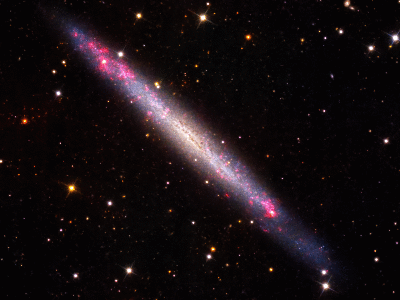
---
My Homepage
RSS news feed
Re: Submissions: 2021 September
Posted: Sat Sep 25, 2021 4:45 pm
by stefanz
SH2-162
SH2-162 (also known as NGC 7635 or Bubble Nebula) is an emission nebula in constellation Cassiopeia. The interaction of the stellar wind of the ionizing star with a larger molecular cloud forms a bubble-like structure.
Click on the images for detailed information and full resolution pictures.
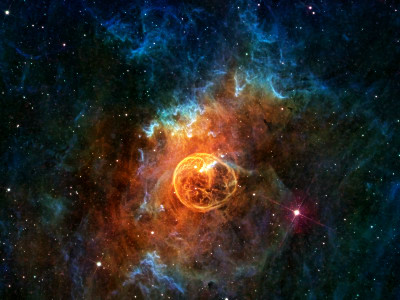
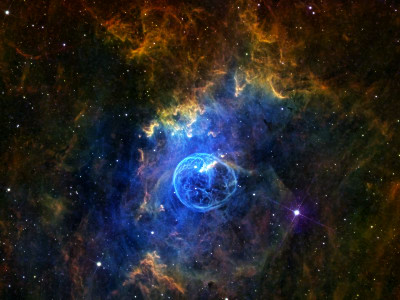
---
My Homepage
RSS news feed
Re: Submissions: 2021 September
Posted: Sat Sep 25, 2021 8:13 pm
by Robin_Onderka
Magical night sky
Copyright:
www.instagram.com/robin_onderka (Robin Onderka)
--
I took this magical photo on my way from the Dark Sky Park in the Beskydy Mountains. In addition to the beautifully visible arc of the Milky Way, you can also see the very bright planets Jupiter and Saturn (left) and an asterism called the summer triangle. This photo is a full-spherical panorama taken with astro modified DSLR and soften filter.
--
Location: Beskydy Mountains, Czech Republic
Canon 6Da, Samyang 24mm f/1.4
55 images merged ito panorama, 10 sec / f/2.5 / ISO 6400
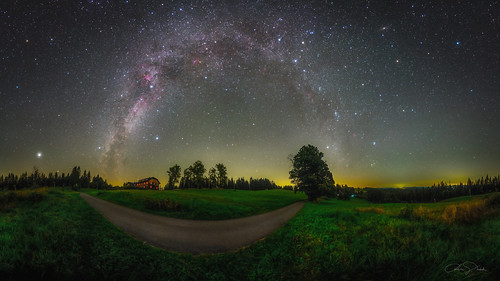 Magical night sky
Magical night sky by
Robin Onderka, on Flickr
Re: Submissions: 2021 September
Posted: Sun Sep 26, 2021 4:04 pm
by the_astronomy_enthusiast
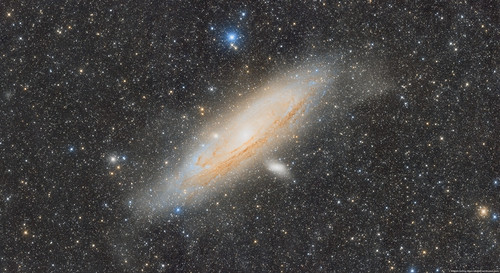 The ghostly shell of Andromeda
The ghostly shell of Andromeda by
William Ostling, on Flickr
A full write up is available here:
https://theastroenthusiast.com/the-ghos ... andromeda/
This image, I think, is one of the best images I have produced. It’s absolutely incredible to me the vastness of this object — it would take light 200,000 years to cross this galaxy. 26 hours of pure data from a bortle 1 site were used to create the incredibly deep astrograph. The faint shell around the bright galaxy was most likely created by past gravitational interactions with other galaxies.
Website:
https://theastroenthusiast.com/
Instagram:
https://www.instagram.com/the_astronomy_enthusiast/
Re: Submissions: 2021 September
Posted: Sun Sep 26, 2021 9:53 pm
by varadinagypal
The Sun in Calcium K line, 2021-09-09
https://csillagtura.ro/the-sun-in-calcium-k-2021-09-09/
Copyright: Pál VÁRADI NAGY
Gear: ASI 178MM (mod>cooled), Baader K-Line Filter 1.25″ (double stacked), TS-Optics 76/342 TS76EDPH, EQ3-mod-autoguided, self built and written autoguider
Re: Submissions: 2021 September
Posted: Mon Sep 27, 2021 12:33 am
by zixin.wu
Horsehead Nebula and Flame Nebula
Re: Submissions: 2021 September
Posted: Mon Sep 27, 2021 9:27 am
by Mathieu80
 M27 Dumbbell Nebula
M27 Dumbbell Nebula by
Mathieu Guinot, sur Flickr
Hi all!
Deep into the famous M27, the Dumbbell Nebula
21h40 exposures through Halpha and Oiii filter, and RVB filters for the stars colour.
Newton 250mm f / 3.8 on CEM120 mount
Camera ZWO Asi 2600mm + Antlia filters
Hii: 117x300s
Oiii: 107x300s
RGB: 30x120s each
HOO-RGB Processing Pixinsight & Photoshop
Re: Submissions: 2021 September
Posted: Mon Sep 27, 2021 2:56 pm
by sendhilchinnasamy
The Bubble Nebula (NGC 7635) also known as Sharpless 162, or Caldwell 11 is 7 light-years across – about one-and-a-half times the distance from our sun to its nearest stellar neighbor, Alpha Centauri – and resides 7,100 light-years from Earth in the constellation Cassiopeia.
The star forming this nebula is 45 times more massive than our sun. The gases that emit different colors were captured using narrowband filters. Oxygen emission mapped to blue, Hydrogen mapped to green and Sulfur mapped to red.
Location – Georgetown, Texas
Total exposure: 28 hours and 35 minutes.

Re: Submissions: 2021 September
Posted: Mon Sep 27, 2021 3:54 pm
by 124Spider
I like dense star fields, and M27 is certainly is in one!
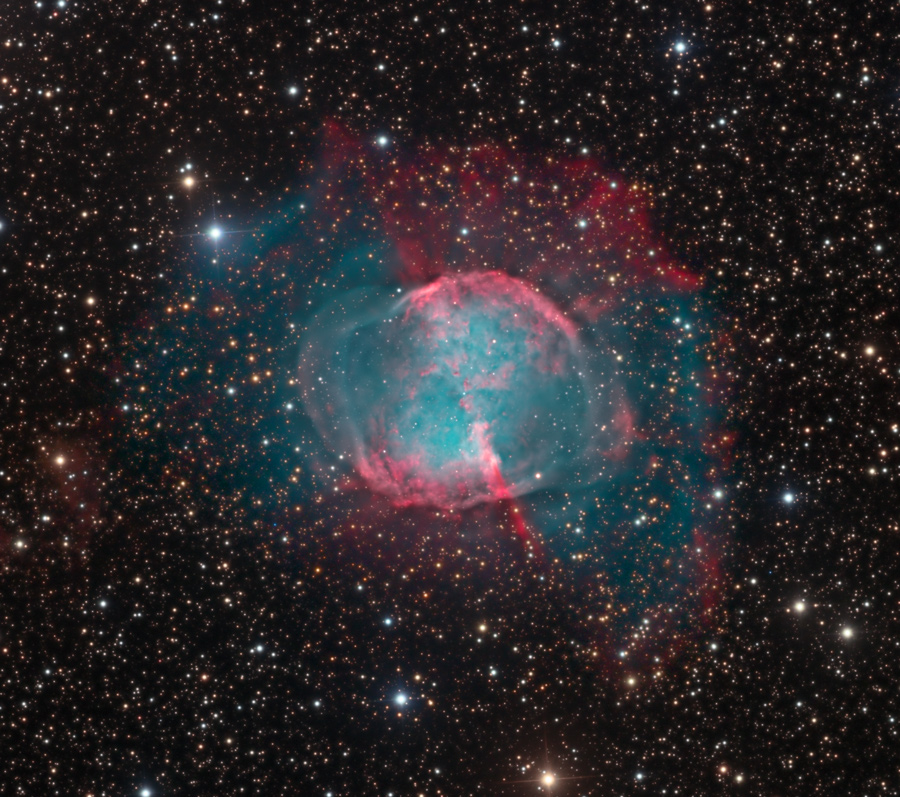
Higher resolution images, and all the information about the object, the image acquisition and processing, can be found at
http://www.de-regt.com/Astronomy/M27.RCOS.htm
Mark de Regt
Re: Submissions: 2021 September
Posted: Mon Sep 27, 2021 4:45 pm
by jeffbax
M 110 (NGC 205) - A crazy "one million" extragalactic stars image.
Hi all,
Messier 110, also known as NGC 205, is a dwarf elliptical galaxy that is a satellite of the Andromeda Galaxy in the Local Group. It is designated peculiar due to patches of dust and young blue stars near its center. This is unusual for dwarf elliptical galaxies in general, and the reason is unclear.
I share this image taken by my friend Serge Brunier from the one meter Newton of the C2PU with the QHY 600 camera. 12 hours of luminance and 1 hour per RGB channel. 60 seconds subs. Processing : layers L,R,G,B stacked by Serge. Assembly and processing myself.
I find the number of resolved stars amazing. It looks like a milkyway, but extragalactic ! At the bottom left, the suburb of M31.
Please, have a look at the full resolution. What looks like noise in low resolution turns into a crazy amount of faint stars.
Crédit : C2PU / S.Brunier / JF Bax.
https://cdn.astrobin.com/images/21355/2 ... e27769.jpg
ASTROBIN link :

Re: Submissions: 2021 September
Posted: Mon Sep 27, 2021 5:19 pm
by abariltur
Mosaic of Veil nebula 2x2
2x2 mosaic panels of the Veil Nebula complex (Western Veil, Eastern Veil, Pickering triangle...) in SHO palette.
Each panel: 20x300s Ha-OIII-SII + 20x30s R-G-B (stars).
TS Photoline 80/480 f6, CGEM, ASI 1600 mm Pro.
Sitges (Barcelona, Spain), 2021 - July-August-September.
Copyright: Alberto Lopez
Re: Submissions: 2021 September
Posted: Wed Sep 29, 2021 4:01 am
by SparkyHT
I respectfully submit my image of IC 5070, The Pelican Nebula. 36h 50m of integration using a Stellarvue SV105-3FT, ZWO ASI294MM-Pro, and Chroma 3nm narrowband filters. Taken from my personal home observatory in Barton, WI over the evenings of 6/22, 7/2, 7/4, 7/9, 7/13, 7/15, and 7/17 2021.
Processing done with Pixinsight, in the Hubble SHO palette. Full details/image at
https://astrob.in/mvv6qb/0/
Re: Submissions: 2021 September
Posted: Wed Sep 29, 2021 11:13 am
by Luca Fornaciari
Nebulae of the Triangulum galaxy M33
With a diameter of more than 50,000 light years, the Triangulum galaxy M33, in the constellation of the Triangulum, shows itself in all its incredible richness of vast ionized zones HII.
This galaxy completes together with our Milky Way and the Andromeda galaxy the Local Group, our small local cluster.
Between young star clusters and areas of high star formation rich in ionized gas, you can get lost among the incredible shapes of nebulae located in another galaxy!
Astrophotography is a life experience that overwhelms you, you can't really relate to all this.
The photograph is a Ha:OIII:LRGB, therefore composed of six monochrome channels acquired with the 300mm diameter newtonian and a monochrome camera during four different nights.
Integration:
L 170x180''
R 14x180''
G 14x180''
B 49x180''
Ha 3nm 15x600''
OIII 3.5nm 27x600''
Total integration: 19.5h
I chose 21 different HII zones, among the most beautiful identified in the image. The names of the HII zones that I have entered allow you to easily identify the zones with Simbad, the astronomical data center in Strasbourg.
Location: Maranello (Italy) - From 09/10/2021 to 09/24/2021
With Sky-Watcher 300 f/4, EQ8R-Pro, Optolong Filters L, R, G, B, Antlia Filters Ha 3nm, OIII 3.5nm, ZWO ASI 294MM
Developed with PixInsight and Photoshop 2021
Copyright: Luca Fornaciari
IG : luca_fornaciari_photography
Website:
www.lucafornaciarifotografia.com
Frames captured from Carl Sagan Observatory in Maranello (Italy).
Bortle 5 / SQM 19.5
Re: Submissions: 2021 September
Posted: Wed Sep 29, 2021 1:20 pm
by tala
A Tale of Fire and Chaos
The Tulip Nebula and Friends - A tale of fire and chaos
This wide-field shot of "fire and chaos" represent the beauty of the Cygnus region - how so much can end with one simple, colorful flower- the Tulip.
The Tulip Nebula and Friends were shot with two different focal lengths to add the Tulip nebula more resolution - 1150mm and 280mm.
1150mm - 60x600sec Ha (10 Hours)
280mm - 72x600sec Ha (12 Hours) - 60x600 Oiii (10 Hours) Total - 32 Hours
Imaging telescopes or lenses: Askar FRA400 F5.6 · GSO RC8" Carbon Tube
Imaging cameras: ZWO ASI294MM Pro · ZWO ASI1600MM Pro
Mounts: iOptron CEM26 · iOptron CEM70
Guiding cameras: ZWO ASI120MM Mini · ZWO ASI174MM mini
Focal reducers: Askar 0.7x Reducer · Astro Physics CCDT67
Software: PHD2 PHD 2 · N.I.N.A. · PixInsight
Filters: Antlia Ha 3nm Pro · Astrodon Ha 3nm · Astrodon OIII 3nm
Re: Submissions: 2021 September
Posted: Wed Sep 29, 2021 2:25 pm
by tommasostella
The Propeller nebula, which can be identified in the Cygnus constellation, is of the emission type (especially ionized hydrogen) and is characterized by the "S" or helix shape in the central part.
Observing it with a wider field, it recalls the phoenix symbolizing death and resurrection, the infinite cycle that feeds the universe.
I could not find certain information on the size and distance from our solar system.
Shooting taken in Maruggio (Taranto-Italy) on September 1, 2021.
Technical data
Lights: 45x420s
Telescope: Apo triplet TS PhotoLine 102/714 + Reducer 0,79x
Camera: QHY 168C
Mount: Skywatcher AZ-EQ6 GT
Filter: Optolong Astronomy Filter L-Enhance
Processing: DeepSkyStacker, PixInsight, Photoshop CC
Re: Submissions: 2021 September
Posted: Wed Sep 29, 2021 10:20 pm
by Guest
Finally getting some nice weather here on the east coast of the U.S. This image of "The Cave Nebula" - (Sh2-155) was acquired 9/24-27/2021 from my backyard (Bortle 4-5 ) using a modest Skywatcher 80mm ED refractor. I used Baader HII (7nm), SII(8nm), OIII(8.5nm) filters and a total of 15 hours of acquisition.
"The Cave Nebula" - (Sh2-155)
Copyright: Jon Kellum
https://live.staticflickr.com/65535/515 ... cb19_k.jpg
Re: Submissions: 2021 September
Posted: Thu Sep 30, 2021 9:37 pm
by matnz
Large Magellanic Cloud: The Spiders Web
Located in the southern constellation Dorado lies the largest satellite galaxy of the Milky Way, the Large Magellanic Cloud (LMC). It spans about 15,000 lights years in width and lies a mere 160,000 light years away. Covering a height of ~9 degrees or the equivalent of 18 full moons, this narrowband SHO image highlights the numerous emission nebula, Ha shells and supernova remnants contained within the LMC. In common with many galaxies, the LMC has a halo surrounding it. Despite the narrowband filters, you can just start to discern some of the variations in this very faint but large halo. This halo has arcs and spiral features, and extends well beyond this frame. The LMC is classified as a magellanic spiral, and you can also discern this barred spiral structure, wrapping from the top right down to the bottom left of the frame.
Website:
https://www.astrobin.com/73l5xa/
Technical Information:
Nikon 200mm at f/2
ASI6200mm
Chroma filters
RST135 Mount
Ha 285min: SII 250min: OIII 280min
Total 13.6 hours
Location: Dunedin, NZ
Imaged in January/February 2021
Volcano night
Posted: Fri Oct 01, 2021 11:49 pm
by cvdarias
I spend the last two days in La Palma trying to help the people that lost his house. Two very intense days. The last one I decide go up the to the island to the border of La Caldera de Taburiente , very close to El Roque de Los Muchachos observatory and take some photos of the Volcano with the milky way close to it. It´s incredible how much light the volcano give but also it´s incredible looking the milky way and a volcano at the same time.
Nikon 16-35 at f4 iso 3200 20seg.
For all the people that lost the house , I not have words to describe my feeling.
In the image you can see the Volcano Cumbre Vieja , the miky way and in the middle the city of Los LLanos de Aridane.
Carlos
Re: Submissions: 2021 September
Posted: Wed Dec 29, 2021 5:49 am
by KuriousGeorge
Ann wrote: ↑Wed Sep 15, 2021 5:44 am
KuriousGeorge wrote: ↑Wed Sep 15, 2021 4:49 am
NGC 7678 in Pegasus. KG Observatory, Julian CA.
NGC 7678, with one particularly prominent arm, is located approximately 164 million light-years away in the constellation of Pegasus (the Winged Horse). With a diameter of around 115,000 light-years, this bright spiral galaxy is a similar size to our own galaxy. It was discovered in 1784 by William Herschel.
The galaxy's heavy arm stems from an increased density of stars' gas in the area. Formations of spiral galaxies may be influenced by magnetic fields, and variations in the intensity and flow of those fields could alter the distribution of star-forming gases. The heavier arm was likely a recipient of more gas earlier in the lifespan of the galaxy, allowing more stars to form.
NGC 7678 is among the 338 galaxies presented in the Atlas of Peculiar Galaxies, which organizes peculiar galaxies according to their unusual features. Cataloged there as Arp 28, this galaxy is listed together with six others in the group “spiral galaxies with one heavy arm.”
https://www.astrobin.com/k5igqv/
I have (unfortunately?) almost given up on commenting on the images in this forum. But I have to say that I love this picture of NGC 7678. It is such a fascinating galaxy, it is almost never photographed, and your image is so fine!
Thank you!
Ann
Thank you so much Ann! Your feedback is always so much appreciated.
 Iguassu Falls by Victor Lima, no Flickr
Iguassu Falls by Victor Lima, no Flickr Iguassu Falls by Victor Lima, no Flickr
Iguassu Falls by Victor Lima, no Flickr














